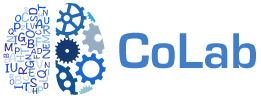
EDUARDO NAVARRETE
Via Venezia, 8 – Room 02.022
eduardo.navarrete@unipd.it
Research Areas
speech production; language and social categorization; lexical access; semantic access; sign language
Selected Publications
Sorry, no publications matched your criteria.
Publications
2020
Miozzo, Michele; Navarrete, Eduardo; Ongis, Martino; Mello, Enrica; Girotto, Vittorio; Peressotti, Francesca
Foreign language effect in decision-making: How foreign is it? Journal Article
In: Cognition, vol. 199, pp. 104245, 2020.
@article{miozzo2020foreign,
title = {Foreign language effect in decision-making: How foreign is it?},
author = {Michele Miozzo and Eduardo Navarrete and Martino Ongis and Enrica Mello and Vittorio Girotto and Francesca Peressotti},
year = {2020},
date = {2020-01-01},
journal = {Cognition},
volume = {199},
pages = {104245},
publisher = {Elsevier},
keywords = {},
pubstate = {published},
tppubtype = {article}
}
2019
Pretato, Elena; Peressotti, Francesca; Navarrete, Eduardo
Giudizi di iconicit`a per 234 segni della Lingua dei Segni Italiana Journal Article
In: Giornale italiano di psicologia, vol. 46, no. 3, pp. 685–708, 2019.
@article{pretato2019giudizi,
title = {Giudizi di iconicit`a per 234 segni della Lingua dei Segni Italiana},
author = { Elena Pretato and Francesca Peressotti and Eduardo Navarrete},
year = {2019},
date = {2019-01-01},
journal = {Giornale italiano di psicologia},
volume = {46},
number = {3},
pages = {685--708},
publisher = {Societ`a editrice il Mulino},
keywords = {},
pubstate = {published},
tppubtype = {article}
}
Mahon, Bradford Z; Navarrete, Eduardo
Adjudicating conflict in speech production—Do we need a central selection mechanism? Journal Article
In: Cognitive Neuropsychology, vol. 36, no. 5-6, pp. 220–224, 2019.
@article{mahon2019adjudicatingb,
title = {Adjudicating conflict in speech production—Do we need a central selection mechanism?},
author = { Bradford Z Mahon and Eduardo Navarrete},
year = {2019},
date = {2019-01-01},
journal = {Cognitive Neuropsychology},
volume = {36},
number = {5-6},
pages = {220--224},
publisher = {Taylor & Francis},
keywords = {},
pubstate = {published},
tppubtype = {article}
}
Sulpizio, Simone; Navarrete, Eduardo
Outgroup faces hamper word recognition Journal Article
In: Psychological Research, pp. 1–11, 2019.
@article{sulpizio2019outgroupb,
title = {Outgroup faces hamper word recognition},
author = { Simone Sulpizio and Eduardo Navarrete},
year = {2019},
date = {2019-01-01},
journal = {Psychological Research},
pages = {1--11},
publisher = {Springer},
keywords = {},
pubstate = {published},
tppubtype = {article}
}
Navarrete, Eduardo; Arcara, Giorgio; Mondini, Sara; Penolazzi, Barbara
Italian norms and naming latencies for 357 high quality color images Journal Article
In: PloS one, vol. 14, no. 2, pp. e0209524, 2019.
@article{navarrete2019italianb,
title = {Italian norms and naming latencies for 357 high quality color images},
author = { Eduardo Navarrete and Giorgio Arcara and Sara Mondini and Barbara Penolazzi},
year = {2019},
date = {2019-01-01},
journal = {PloS one},
volume = {14},
number = {2},
pages = {e0209524},
publisher = {Public Library of Science San Francisco, CA USA},
keywords = {},
pubstate = {published},
tppubtype = {article}
}
Mancuso, Mauro; Damora, Alessio; Abbruzzese, Laura; Navarrete, Eduardo; Basagni, Benedetta; Galardi, Giuseppe; Caputo, Marina; Bartalini, Brunella; Bartolo, Michelangelo; Zucchella, Chiara; others,
A New Standardization of the Bells Test: An Italian Multi-Center Normative Study Journal Article
In: Frontiers in psychology, vol. 9, pp. 2745, 2019.
@article{mancuso2019newb,
title = {A New Standardization of the Bells Test: An Italian Multi-Center Normative Study},
author = { Mauro Mancuso and Alessio Damora and Laura Abbruzzese and Eduardo Navarrete and Benedetta Basagni and Giuseppe Galardi and Marina Caputo and Brunella Bartalini and Michelangelo Bartolo and Chiara Zucchella and others},
year = {2019},
date = {2019-01-01},
journal = {Frontiers in psychology},
volume = {9},
pages = {2745},
publisher = {Frontiers},
keywords = {},
pubstate = {published},
tppubtype = {article}
}
2018
Francesca Peressotti Anna Lorenzoni, Eduardo Navarrete
The Manipulability Effect in Object Naming Journal Article
In: Journal of Cognition, vol. 1, no. 30, 2018.
@article{Lorenzoni_JCogn_2018b,
title = {The Manipulability Effect in Object Naming},
author = {Anna Lorenzoni, Francesca Peressotti, Eduardo Navarrete},
url = {https://www.journalofcognition.org/articles/10.5334/joc.30/},
doi = {http://doi.org/10.5334/joc.30},
year = {2018},
date = {2018-05-25},
journal = {Journal of Cognition},
volume = {1},
number = {30},
abstract = {Seeing objects triggers activation of motor areas. The implications of this motor activation in tasks that do not require object-use is still a matter of debate in cognitive sciences. Here we test whether motor activation percolates into the linguistic system by exploring the effect of object manipulability in a speech production task. Italian native speakers name the set of photographs provided by Guérard, Lagacè and Brodeur (Beh Res Meth, 2015). Photographs varied on four motor dimensions concerning on how easily the represented objects can be grasped, moved, or pantomimed, and the number of actions that can be performed with them. The results show classical psycholinguistic phenomena such as the effect of age of acquisition and name agreement in naming latencies. Critically, linear mixed-effects models show an effect of three motor predictors over and above the psycholinguistic effects (replicating, in part, previous findings, Guérard et al., 2015). Further research is needed to address how, and at which level, the manipulability effect emerges in the course of word production.},
keywords = {},
pubstate = {published},
tppubtype = {article}
}
Pretato, Elena; Peressotti, Francesca; Bertone, Carmela; Navarrete, Eduardo
The iconicity advantage in sign production: The case of bimodal bilinguals Journal Article
In: Second Language Research, vol. 34, no. 4, pp. 449–462, 2018.
@article{pretato2018iconicity,
title = {The iconicity advantage in sign production: The case of bimodal bilinguals},
author = { Elena Pretato and Francesca Peressotti and Carmela Bertone and Eduardo Navarrete},
doi = {https://doi.org/10.1177/0267658317744009},
year = {2018},
date = {2018-01-01},
journal = {Second Language Research},
volume = {34},
number = {4},
pages = {449--462},
publisher = {SAGE Publications Sage UK: London, England},
abstract = {Recent evidence demonstrates that pictures corresponding to iconic signs are named faster than pictures corresponding to non-iconic signs. The present study investigates the locus of the iconicity advantage in hearing bimodal bilinguals. A naming experiment with iconic and non-iconic pictures in Italian Sign Language (LIS) was conducted. Bimodal bilinguals named the pictures either using a noun construction that involved the production of the sign corresponding to the picture or using a marked demonstrative pronoun construction replacing the picture sign. In this last condition, the pictures were colored and participants were instructed to name the pronoun together with the color. The iconicity advantage was reliable in the noun utterance but not in the marked demonstrative pronoun utterance. In a third condition, the colored pictures were presented as distractor stimuli and participants required to name the color. In this last condition, distractor pictures with iconic signs elicited faster naming latencies than non-iconic signs. The results suggest that the advantage of iconic signs in production arises at the level of semantic-to-phonological links. In addition, we conclude that bimodal bilinguals and native signers do not differ in terms of the activation flow within the sign production system.},
keywords = {},
pubstate = {published},
tppubtype = {article}
}
Petrova, Anna; Navarrete, Eduardo; Suitner, Caterina; Sulpizio, Simone; Reynolds, Michael; Job, Remo; Peressotti, Francesca
Spatial congruency effects exist, just not for words: looking into estes, Verges, and Barsalou (2008) Journal Article
In: Psychological science, vol. 29, no. 7, pp. 1195–1199, 2018.
@article{petrova2018spatial,
title = {Spatial congruency effects exist, just not for words: looking into estes, Verges, and Barsalou (2008)},
author = { Anna Petrova and Eduardo Navarrete and Caterina Suitner and Simone Sulpizio and Michael Reynolds and Remo Job and Francesca Peressotti},
doi = {doi: 10.1177/0956797617728127},
year = {2018},
date = {2018-01-01},
journal = {Psychological science},
volume = {29},
number = {7},
pages = {1195--1199},
publisher = {SAGE Publications Sage CA: Los Angeles, CA},
abstract = {Estes, Verges, and Barsalou (2008) reported that reading a word with a spatial connotation (e.g., sky) interfered with the subsequent identification of an unrelated visual stimulus (letter X or O) presented in a semantically related portion of the screen (location-cue congruency, or LCC, effect). In a series of nine experiments, we attempted to obtain this effect but met with no success. Rather, we obtained other expected spatial and semantic effects highlighting the robustness of our procedures. We contend that the LCC effect needs to be taken with great caution.},
keywords = {},
pubstate = {published},
tppubtype = {article}
}
2017
Navarrete, E.; Peressotti, F.; Lerose, L.; Miozzo, M.
Activation cascading in sign production Journal Article
In: J Exp Psychol Learn Mem Cogn, vol. 43, no. 2, pp. 302–318, 2017.
@article{pmid27656874,
title = {Activation cascading in sign production},
author = {E. Navarrete and F. Peressotti and L. Lerose and M. Miozzo},
doi = {doi: 10.1037/xlm0000312},
year = {2017},
date = {2017-02-01},
journal = {J Exp Psychol Learn Mem Cogn},
volume = {43},
number = {2},
pages = {302--318},
abstract = {In this study, we investigated how activation unfolds in sign production by examining whether signs that are not produced have their representations activated by semantics (cascading of activation). Deaf signers were tested with a picture-picture interference task. Participants were presented with pairs of overlapping pictures and named the green picture (target) while ignoring the red picture (distractor). In Experiment 1 we varied whether target and distractor pictures had similar signs. Signs were produced faster with sign-related picture pairs compared to unrelated picture pairs. The facilitation observed with sign-related pairs replicates the 1 obtained in speaking with sound-related pairs (e.g., bed-bell), a finding cited in support of cascading of activation. In Experiments 2A and 2B we focused on sign iconicity, anticipating that cascading of activation would lead to a facilitatory effect of iconicity. Consistent with this prediction, picture distractors with iconic signs induced faster responses. Furthermore, in Experiment 3, facilitation was found for iconic signs in picture naming. Altogether, our results reveal that cascading of activation is a fundamental aspect of language processing that is at play not only in speaking, but also in signing. Our results also help to define which signs are activated in sign production.},
keywords = {},
pubstate = {published},
tppubtype = {article}
}
Electronic versions of papers are provided as a professional courtesy to ensure timely dissemination of academic work for individual, noncommercial purposes. Copyright and all rights therein reside with the respective copyright holders, as stated in each paper. These files may not be reposted without permission.
